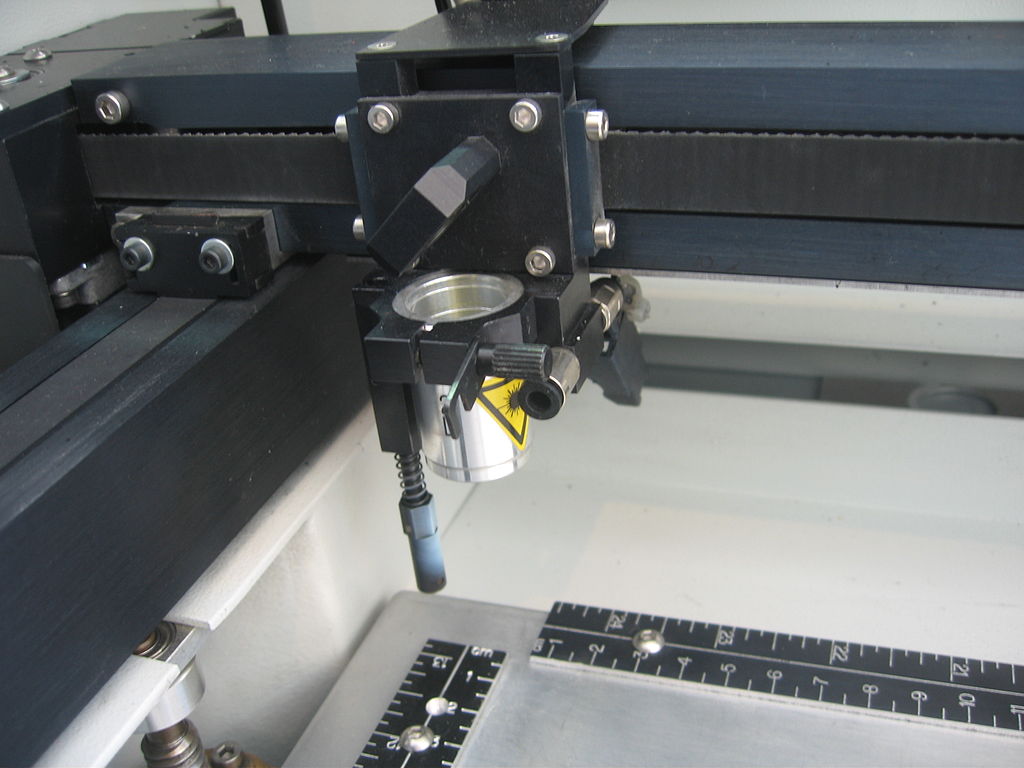A short guide to laser engravers and getting started with the business of laser engraving.
The field of laser engraving has experienced steady growth for a number of years and there doesn’t appear to be any slowdown in sight. Manufacturers of laser etching machines are reporting continued interest along with increased sales every year and most believe the industry will continue to grow rapidly.
Laser’s continued rapid growth seems to be due to a number of reasons. One of the primary reasons is that there is ongoing interest in the field of personalization. Lasers provide an excellent opportunity of increasing production, expanding product lines and ultimately increasing the bottom line.
As laser technology expands outside of the awards industry, the interest level automatically grows exponentially. Whenever a new customer installs a laser machine, their manufacturing efficiency increases. In many markets, older and slower technology is being replaced by lasers to increase production. Many business owners can actually venture into newer markets that they could never have entered before without laser technology. Once people discover what lasers are capable of doing, they can visualize a new need for it in many different markets.
Laser etching machines are beginning to appear everywhere. They are filling a need in the fabric and apparel markets, woodworking, architectural model-making, signage and many other industries. Lasers versatility for engraving and cutting applications continues to grow at a steady rate. Lasers allow existing businesses and startups to expand their products lines and increase profit margins.
Most manufacturers say that laser equipment prices have been relatively stable for the past several years with no large increases in pricing. Small footprint low-wattage systems are being developed for customers who don’t have the need for high-wattage machines that are overly expensive for their products. Also keeping prices down are laser systems being produced in the Far East that offer less expensive products that may do the jobs nearly as well as conventional machines.
Meanwhile, larger lasers with more power continue to be in demand. Even though these lasers may cost more, their manufacturing costs have not generally increased. In cases where the price of products did increase, the reasons are usually because of increased table sizes or higher laser wattages. Also, many equipment manufacturers have begun in-house production of CO2 laser tubes to accommodate increased demand from their customers.
Many additional laser accessories are also now being produced that make processing more effective for customers. Optical recognition systems typically work with a camera that can read registration marks that are printed on the substrate. The information is then transferred to the computer so that pinpoint registration can be done to cut the image out precisely. This option is now being offered by most of the major laser manufacturers as digital printing continues to increase in popularity.

Getting Started with the Business of Laser Engraving
Anyone wanting to begin a business using a laser machine must originally think about what they will be creating and who they will be selling those products to. For a beginner, and when cost is a factor, it’s generally recommended that one purchase a machine with at least 25 watts of power. Anything smaller will put you at a disadvantage for many projects that you won’t be able to do successfully.
A second requirement is to buy a machine with air assist. Air assist sends a constant stream of compressed air across your engraving surface at the burn point that reduces flare and produces a deep and clean engraving. Small jobs can be done without it, but once you use air assist, you’ll never try etching without it.
How large should your engraving bed be is the next question. Usually the bigger it is, the better, but expense can easily come into play here. It’s generally recommended that a 12 x 24 inch or 12 x 18 inch bed is usually sufficient for most ad specialty and smaller marking projects. Later on as your sales increase, there should be enough in the budget to purchase a larger table with front and rear doors for larger items.
Once you’ve got the tools set up, it’s time to sell yourself and your new business. It’s important not to overlook almost any market when you’re just starting out, for you never know where you’ll be finding business opportunities. Here are just a few market ideas that you may not have considered for starting out a new business with your laser etching machine:
- Rubber Stamps
Here’s one of the first applications for a laser engraver. It’s easy and has the potential to be very profitable.
- Glass & Mirrors
Glass and most mirrors are perfect to engrave with a laser. Etching a business logo on a 75 cent wine glass can easily sell for upwards of $15 to $20 each.
- Tags & Labels
Another huge market for laser engraving, from safety labels, window stickers, decorative labels, etc. All can be done on almost any surface.
- Plastic Signs & Name Badges
There’s no shortage of demand for these, and the more creative you are, the better.
- Wood Products
Laser engraved wood products are unique and beautiful, and the results can be quite profitable.
- Trophy Products
Lasers can engrave trophy plates much faster than conventional methods.
- Laser Cutting
From hobbyists to model trains and ships; auto mechanics to woodworkers; nearly everyone needs something cut out cleanly and lasers do it best.
These applications just scratch the surface of possibilities for someone just starting out in the laser engraving business. There are literally thousands of uses that are not necessarily obvious when you are just starting out. And rarely do users find themselves doing what they originally intended to do. Lasers are such extremely flexible machines that owners who use them nearly always quickly find more interesting and profitable applications than they were originally expecting.
The continued demand for lasers to produce so many varied items for so many different uses assures their popularity for at least the near term. However, as niche and newer markets continue to appear, many varied and exciting new processes will most assuredly become even more popular in the future.
###
About the Author:
 Erryn Deane
Erryn Deane
Needham Coding
https://www.needham-coding.com/
Erryn is the digital business manager for The Needham Group of companies, with a wealth of knowledge in laser marking systems, amongst many other things, he has decades of experience in online development, business analysis and management. In his spare time, he likes to find out how things work and looks to improve them, from vehicles to electronics or even musical instruments.

It’s interesting to read about just how any things can be laser etched for custom situations. I think that laser etching the wood products could be a great way to customize them without too much effort. I’ll have to keep this in mind for custom pens, etc. as it could really improve the look of them. Thanks for sharing!
That’s a great review of laser engraving and is so beneficial to people starting out within the sector. Congrats!
One issue to raise is the materials not to be lasered. For example those plastics containing PVC. The resultant by products after lasering PVC is chlorine gas!!?!! Not a nice thing to breath in!